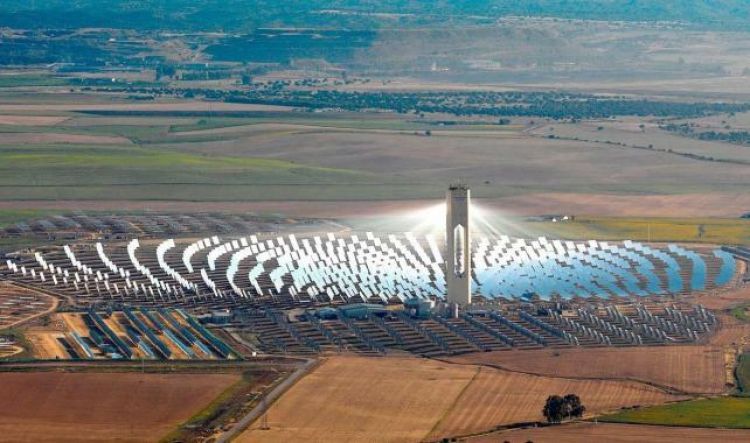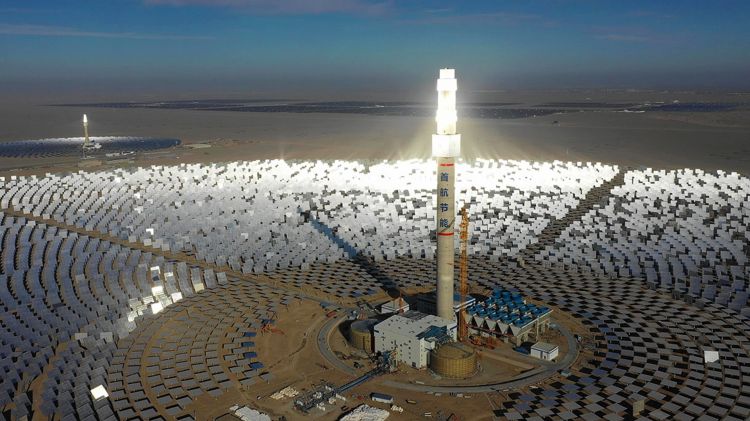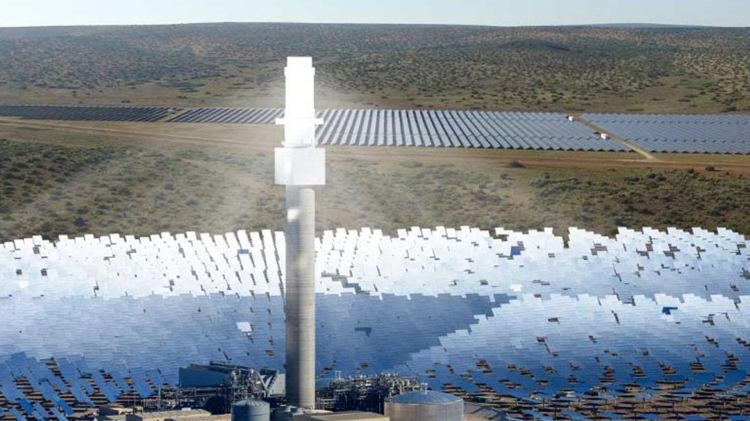In Spain, as in much of Europe and America, efforts are made to maximize energy efficiency, taking advantage of the energy offered by the sun, which is an abundant and renewable source. A solar thermal power plant It is an alternative for the production of clean energy, which does not cause water or air pollution and reduces the dependency factor on the electrical network.
Today you will learn by reading this article what is a solar thermal power plant and some other related aspects, which will be very useful for you to know.
What is a solar thermal power plant?
A solar thermal power plant is an electricity generating plant that uses energy from sunlight to produce the high-temperature heat needed to generate electricity. All solar thermal energy systems have solar energy collectors with two main components:
- Reflecting mirrors that capture and focus sunlight onto a receiver. They act as tracking systems that keep sunlight focused on the receiver throughout the day as the sun changes position in the sky.
- They usually have a large set of collectors that carry the heat to a turbine and a generator..
Solar thermal power plants also usually have a thermal energy storage system that allows the solar collector system to heat an energy storage system during the day. Heat from the storage system is used to generate electricity at night or when the sky is cloudy.
Solar thermal power plants can also be hybrid systems that use other fuels; such as natural gas, to supplement the sun’s energy during periods of low solar radiation.
Solar thermal energy and how it differs from photovoltaic
Solar thermal energy differs from photovoltaic solar energy in that solar thermal technologies use the heat of the sun to produce energy. The Photovoltaic solar energy takes advantage of the photovoltaic effect of certain semiconductors such as silicon to generate a flow of electricity directly from the sun’s rays.
In other words, Photovoltaic power plants generate energy directly from solar energy. Thermal systems heat the fluid to transport energy. The generated heat can be used to run a gas turbine, steam engine, or the like.
The Generation capacity of photovoltaic systems is around 500 MW. In thermal systems, their capacity may be less than 400 MW. The main use of residential solar thermal power plant is water heating. However, residential photovoltaic systems generate DC electricity directly from solar energy.
The solar thermal power plant and its types
There are three types of systems for concentrating solar thermal energy, but they all use mirrors to reflect and concentrate sunlight at a point. At this point, solar energy is collected and converted to thermal energy, which creates steam and runs a generator.
- Linear concentration systems.
- Solar power towers.
- Solar dish/engine systems.
Linear concentration systems
Linear concentration systems take the energy of the sun through the use of U-shaped, long and rectangular curved mirrors. The mirrors focus sunlight onto tubes that run the length of the mirrors. Concentrated sunlight heats a fluid that flows through the tubes.
The fluid is sent to a heat exchanger that boils water in a conventional steam turbine generator to produce electricity. There are two main types of linear concentrator systems:
- parabolic trough systems: Receiver tubes are placed along the focal line of each parabolic mirror. It has a long, parabolic-shaped reflector that focuses the sun’s rays onto a receiving tube that is at the focus of the parabola..
The collector is tilted with the sun to keep sunlight focused on the receiver as the sun moves from east to west during the day.
- Linear Fresnel reflector systems: The receiver tube is placed over several mirrors to allow you greater mobility when tracking the sun. These reflectors use the Fresnel effect lens, which allows for a concentrating mirror with a large aperture and short focal length.
These systems are capable of concentrating the sun’s energy up to +/- 30 times its normal intensity.
solar towers
A solar power tower system uses a large field of flat sun-tracking mirrors called heliostats to reflect and focus sunlight onto a receiver at the top of a tower. Sunlight can be concentrated up to 1,500 times. Some power towers use water as a heat transfer fluid.
Advanced designs are being experimented with molten nitrate salt due to its superior heat transfer and energy storage capabilities.
Solar Dish/Motor Systems
These systems use a reflected antenna similar to a very large satellite dish. To reduce costs, the mirrored plate is usually made up of many smaller flat mirrors formed into the shape of a plate.
The dish-shaped surface directs and concentrates sunlight onto a thermal receiver, which absorbs and collects the heat and transfers it to a motor generator. The type of heat engine commonly used in these systems is the Stirling engine. This system uses the fluid heated by the receiver to move the pistons and generate mechanical power..
Mechanical energy drives a generator or alternator that subsequently generates electricity.
Benefits of a solar thermal power plant
- The conversion of thermal energy into electricity is more efficient.
- The heat storage is more efficient and profitable than electricity storage.
- these plants produce a reliable amount of power that can be used when needed.
- It is a kind of technology cleaner electricity generation than the generation of electricity through the use of fossil fuels.



